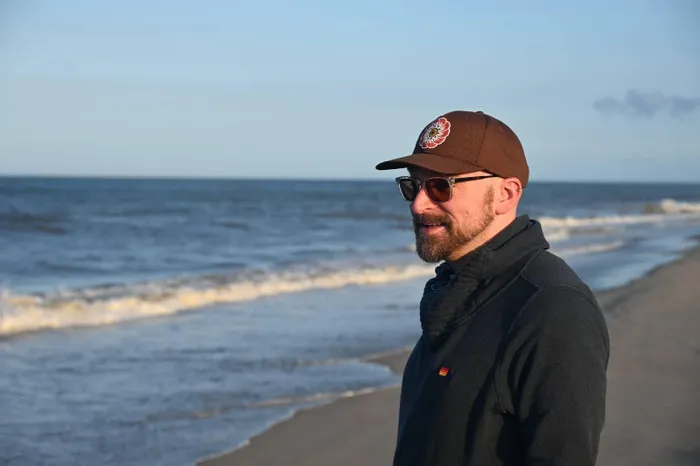
Image: Supplied
Three stories converged to birth Tethral that started with public comment about generative AI. This was an early indication of an ongoing user problem, a growing gap in the application of AI systems. Conventional LLM’s at the time were solutions looking for problems to solve, not one's purpose built to augment what people value and shed what they cannot. You cannot ask one piece of AI to clean the kitchen when everything around it remains isolated.
What Built a Solution
Tethral emerged from what John Lunsford, founder, calls a collision of three stories that revealed a critical and longstanding gap in IoT ecosystems.
“The roots of Tethral started more than a decade ago,” Lunsford reflects, “As an engineer doing vulnerability and intrusion work for the federal government in 2010. I saw how fragile these systems really are, even when we make an effort to protect them.” Having left public service work for a PhD from Cornell just a few years later he ran across a researcher who compiled thousands of unsecured baby cameras online to demonstrate IoT vulnerability. “I understood the point,” Lunsford says. “But as a new parent of two young children, it felt more like a violation than a demonstration.”
The second story
What was even more troubling, says Lunsford, was that another report came out in the second week of June 2025, detailing the continued vulnerability of camera-equipped devices from baby monitors to smart refrigerators. For manufacturers the default response is often more security, fewer devices, tighter control of functionality. But that cycle is precisely what prevents IoT from being useful. Is it too much to ask for a system that is both private and flexible?
The second story is rooted in more recent years. As the world paused in collective awe at the rise of large language models, Lunsford was working inside a major tech company helping define how LLMs could accelerate workflows. Amid the excitement, a quieter discourse emerged that stuck with him. “It went something like - I want AI to do the dishes so I can focus on my art, not AI to do my art so I can focus on the dishes,” Lunsford recalled. For him, this was about automation and the need for a flexible approach to human-AI collaboration. What was missing, according to Lunsford, was a way to allow each of us to shape what experiences we want to protect or even amplify - without also needing an advanced engineering degree.
When your thermostat works for someone else
Yet for all of AI’s growth, users face a frustrating reality: their devices barely talk to each other unless two companies have pre-negotiated the compatibility. "That's not empowering. That's branding," Lunsford says. "The current model serves the ecosystem, not the user."
The Cornell PhD, engineer, and Uber safety & AI researcher knows something about building systems that work for people. At Uber, he co-led the 0-1 of Uber Teens and Women Preferences alongside a host of other tools and features that carefully balance user safety with privacy. “When designing an ecosystem that starts out fragmented, you can’t only look at actions in isolation, you have to understand the ecosystem, why people might seek out a particular solution in the first place.”
The great device divorce
The fragmentation problem runs deeper than incompatible apps. Today's IoT world operates like a series of feudal kingdoms, each controlled by a tech giant with its own rules, protocols, and profit motives.
Amazon builds devices that work best with other Amazon products. Apple creates an experience within its ecosystem but struggles to play nicely with others. Google and Samsung follow similar patterns. Even when these companies offer limited cross-platform compatibility, they maintain tight control over what connects and how.
This approach forces consumers into impossible choices. Want your lights to talk to your thermostat? Better hope they are from compatible brands. Need your air quality monitor to ping your calendar? Good luck unless you live entirely within one ecosystem.
"You shouldn't have to throw away what you already own just to get your lights to talk to your thermostat," Lunsford argues. The waste does not just involve money. Perfectly functional devices become digital orphans when users switch platforms or when companies abandon product lines.
Building bridges instead of walls
The third story hit much closer to home. Living in drought-prone Northern California, Lunsford had tried to connect his irrigation system to weather data, local water conservation mandates, and a directory of drought resistant plants. But despite his engineering background and years working with complex systems, he couldn’t get the devices to coordinate.
“It was ridiculous,” he recalls. “At work I was building a safe experience with systems used by millions. At home, I couldn’t stop my sprinkler from running during a rainstorm.”
Lunsford saw this failure appear again and again. Wildfire, earthquake, and even tsunami warnings stopped at the notification screen of his phone, with no easy way to connect them with a single device like monitoring for a gas leak, or turning on an air purifier for the kids when the air became dangerous to breathe. Even though for Lunsford these moments stretched across more than a decade, together they revealed a growing opportunity. As the number of smart devices in our homes and businesses continue to rise, we need a better way, an easier way to orchestrate them around human priorities. And what’s more of a priority than wanting to keep your family safe? For the founder of Tethral, that means restoring meaningful user control over privacy, context, and automation. Doing that demands a more ambitious approach to IoT than classical architectures allow. That’s the gap Tethral set out to close.
